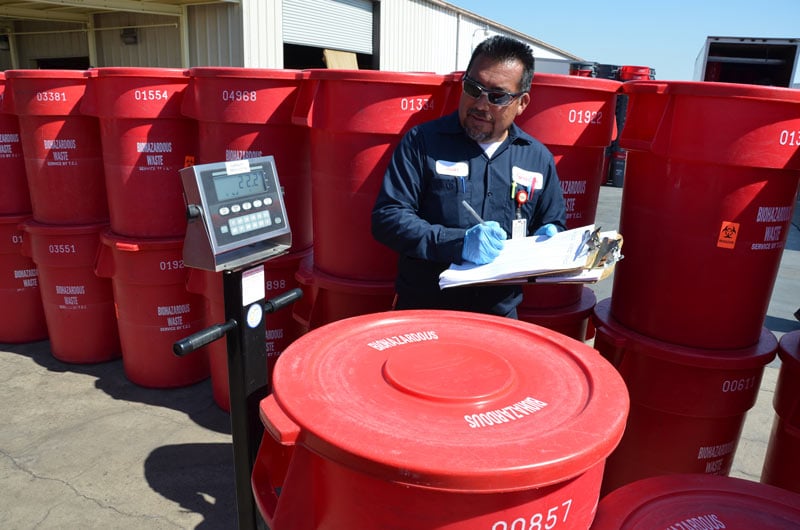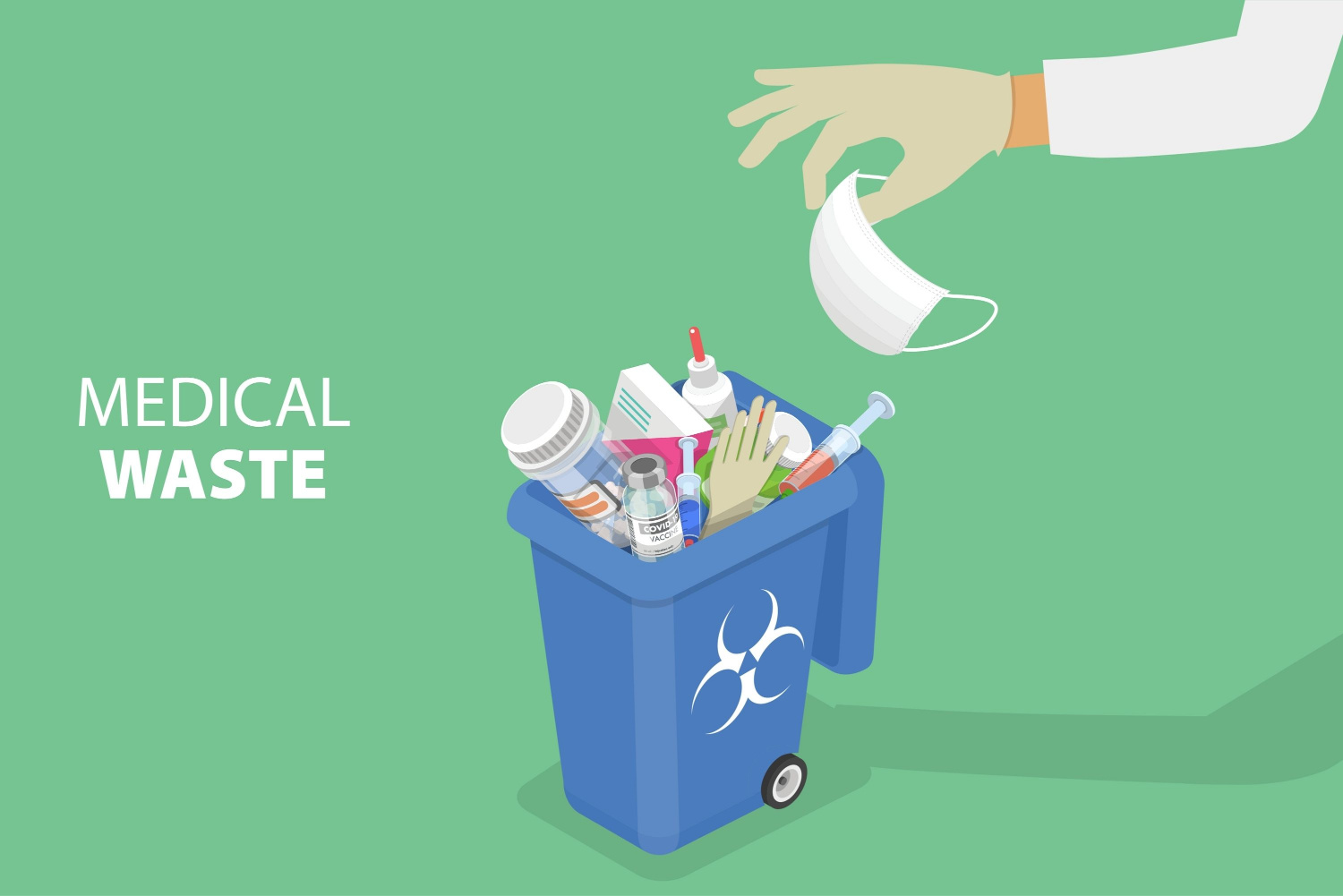Reliable and Liable Medical Waste Removal: Protecting Individuals and the Earth
Wiki Article
Conformity and Laws for Medical Waste Disposal
Conformity and policies for clinical waste disposal play a crucial role in making sure the safety and health of both medical care specialists and the general public. Correct management of clinical waste is important to prevent the spread of infections, protect the atmosphere, and preserve public health and wellness. This calls for adherence to certain guidelines and protocols stated by regulative companies and bodies. These laws incorporate numerous elements, consisting of the classification and partition of clinical waste, appropriate storage space and managing procedures, along with transportation and disposal approaches. By complying with these regulations, health care centers can minimize the danger of contamination and possible injury to individuals and the atmosphere. This short article will certainly check out the relevance of compliance and offer an introduction of the crucial laws regulating medical waste disposal.Significance of Compliance
The value of compliance with guidelines for medical waste disposal can not be overstated. Correct disposal of medical waste is essential for making certain the safety and well-being of medical care employees, people, and the general public. Clinical waste, which consists of things such as made use of needles, infected handwear covers, and biomedical waste, can position major health risks otherwise taken care of and disposed of correctly.Compliance with regulations ensures that clinical waste is handled in a way that minimizes the possibility for direct exposure to contagious diseases and harmful materials - medical waste disposal. It helps protect against the spread of infections, such as HIV, liver disease B and C, and other bloodborne virus. Compliance additionally plays a crucial role in shielding the atmosphere by preventing contamination of water resources, soil, and air
Failing to adhere to regulations can cause severe effects for health care centers, including penalties, legal activity, and damage to their credibility. In addition, non-compliance may compromise the wellness and safety of healthcare workers, individuals, and the community.
Compliance with laws for medical garbage disposal requires adherence to particular standards and protocols. These might consist of proper segregation, product packaging, labeling, and storage of medical waste. It additionally involves utilizing accepted disposal methods, such as autoclaving, landfilling, or incineration, relying on the type of waste.
Regulative Agencies and Bodies
Regulative firms and bodies play an important duty in overseeing compliance with policies for clinical waste disposal. These organizations are responsible for setting methods, guidelines, and criteria to make sure the proper and safe handling of clinical waste. They enforce and keep track of compliance to shield public health and the environment.One of the most prominent regulatory agencies in the USA is the Environmental Protection Firm (EPA) The EPA is liable for managing the storage space, transportation, treatment, and disposal of medical waste. They develop standards for waste generators, carriers, and treatment facilities to adhere to, making certain that all essential preventative measures are required to avoid the spread of diseases and contamination.
An additional vital regulative body is the Occupational Security and Health Management (OSHA) OSHA establishes standards and regulations to safeguard employees from work-related risks, including those pertaining to medical waste. WasteX Medical Waste Disposal. They offer standards for the risk-free handling and disposal of clinical waste to secure employees in health care facilities
Along with these federal companies, individual states likewise have their own regulative bodies that oversee medical garbage disposal. These agencies might have their own certain regulations and demands that must be complied with.

Classification and Partition of Clinical Waste
To make sure correct administration of clinical waste, it is important to identify and segregate it according to established standards and protocols. medical waste disposal service. Classification and segregation play an essential duty in reducing the threat of infection, securing the setting, and making sure the safety of health care employees and the publicClinical waste is categorized right into various categories based on its prospective threat degree. These categories include contagious waste, pathological waste, sharps waste, pharmaceutical waste, chemical waste, and contaminated waste. Each group calls for specific handling, transport, storage space, and disposal methods to reduce the danger of direct exposure and contamination.
Partition of clinical waste entails dividing various kinds of waste at the resource. This procedure makes certain that waste with different danger degrees is not mixed, reducing the potential for cross-contamination and making disposal treatments a lot more reliable. Correct segregation is attained via making use of color-coded tags and containers, which assist health care employees and waste management personnel recognize and deal with each type of waste appropriately.
Along with classification and segregation, health care facilities must additionally abide by local, state, and government laws regarding medical waste administration. These laws lay out certain requirements for storage space, transportation, treatment, and last disposal of clinical waste, guaranteeing compliance and keeping public health and wellness and safety.
Correct Storage Space and Dealing With Treatments
Proper storage space and taking care of treatments play an essential duty in making sure the risk-free and compliant administration of medical waste. Clinical waste, that includes items such as used syringes, infected handwear covers, and expired drugs, can present severe health and ecological dangers if not taken care of properly. It is essential for medical care facilities and various other generators of medical waste to implement stringent storage and managing protocols.
To start with, medical waste must be stored in long lasting, leak-proof containers that are particularly designed for this function. These containers should be identified with the global biohazard sign and words "medical waste" to clearly show the contents. In addition, the containers should be maintained firmly near stop any prospective leak or spillage.
Moreover, it is essential to segregate various sorts of medical waste to stop cross-contamination. Sharps, such as needles and scalpels, ought to be kept in puncture-resistant containers to minimize the risk of injuries - WasteX Medical Waste Disposal. Chemical waste, such as solvents and anti-bacterials, should be kept individually from various other types of medical waste to avoid chain reactions or unsafe direct exposures

Transport and Disposal Techniques
Medical care facilities need to ensure the secure transportation and appropriate disposal of their medical waste to adhere to policies and shield public health and wellness. Transportation and disposal techniques play a sites vital role in protecting against the spread of infectious conditions and reducing the environmental influence of medical waste.
To deliver medical waste, medical care centers should utilize puncture-resistant and leak-proof containers that are identified with the biohazard sign. These containers ought to be firmly sealed to stop any type of leakage during transportation. Furthermore, health care centers need to develop methods for the transport procedure, including the use of dedicated cars and trained employees.
When the medical waste gets to the disposal facility, it goes through numerous techniques of therapy. One common technique is incineration, which entails shedding the waste at heats to destroy microorganisms and reduce the volume of waste. An additional method is autoclaving, which utilizes vapor and pressure to disinfect the waste. After therapy, the waste is usually sent out to a landfill or a waste-to-energy facility for last disposal.
It is important for health care centers to collaborate with qualified and allowed waste management companies to guarantee appropriate transportation and disposal of medical waste. These business have the experience and sources to take care of clinical waste securely and in conformity with laws.
Verdict
To conclude, conformity with laws for clinical garbage disposal is of utmost importance to make certain public health and safety. Regulatory agencies and bodies play an important function in imposing these regulations. Proper category and partition of clinical waste, in addition to following suitable storage and taking care of treatments, are vital to protect against contamination and the spread of conditions. Adequate transport and disposal approaches need to be executed to minimize ecological effects. On the whole, adherence to compliance and laws is essential to successfully handle medical waste.Medical waste, which consists of items such as made use of needles, contaminated handwear covers, and biomedical waste, can position severe health dangers if not handled and disposed of effectively.
These categories consist of infectious waste, pathological waste, sharps waste, pharmaceutical waste, chemical waste, and contaminated waste.Partition of medical waste includes dividing different kinds of waste at the resource. Appropriate partition is achieved with the usage of color-coded containers and labels, which aid healthcare workers and waste monitoring personnel determine and take care of each type of waste properly.
Chemical waste, such as anti-bacterials and solvents, ought to be saved separately from other kinds of clinical waste to prevent chemical reactions or harmful direct exposures.
Report this wiki page